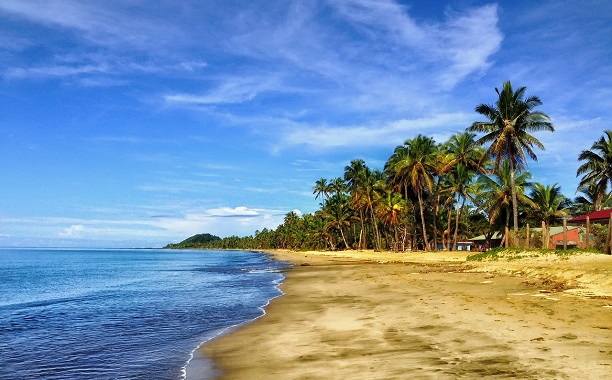While a tropical vacation might not sound like a bad idea to a lot of folks, dinosaurs from the mid-Triassic period tended to steer clear of the area — instead, inhabiting the north and south ends of what was then the supercontinent of Pangea.
While scientists have wondered why dinosaurs, with the exception of a few small-bodied meat-eating dinosaurs, once avoided the tropical region near the equator, a team of international scientists believes it has a solution.
The team of international scientists pieced together a detailed picture of the climate and ecology of a fossil rich site, which is rich in Late Triassic Period fossils, in northern New Mexico known as Ghost Ranch.
The study, which was published in the journal Proceedings of the National Academy of Sciences, suggests that the tropical climate fluctuated wildly in an unpredictable fashion with extremes that included drought, intense heat and even wildfires — which would continually reshape the vegetative landscape available to herbivores.
Randall Irmis, study co-author and curator of paleontology at the Natural History Museum of Utah as well as an assistant professor at the University of Utah, was quoted in a release on EurekAlert as having said that the study’s data suggests “it was not a fun place” to live.
Our data suggest it was not a fun place (…) It was a time of climate extremes that went back and forth unpredictably and large, warm-blooded dinosaurian herbivores weren’t able to exist nearer to the equator – there was not enough dependable plant food
According to the study’s findings, atmospheric carbon dioxide levels during the Late Triassic Period were four to six times the levels found today. However, study co-author Irmis claims that we could see similarly high-CO2 conditions if we continue at our present rate. Subsequently, this could “suppress low-latitude ecosystems,” according to Irmis.
If we continue along our present course, similar conditions in a high-CO2 world may develop, and suppress low-latitude ecosystems
Whiteside was quoted by the Christian Science Monitor as having said that the data also suggests “profound consequences for our modern world” if we reach the high CO2 conditions which “are predicted to occur in the next 100 years.”
These data suggest there are profound consequences for our modern world if they enter the high CO2 conditions that are predicted to occur in the next 100 years.
The study was led by geochemist Jessica Whiteside, a lecturer at the University of Southampton, and funded by the National Science Foundation, Richard Salomon Foundation, National Geographic Society Committee for Research & Exploration, Dyson Foundation, University of Utah, University of California Museum of Paleontology, and others.
In other news, researchers plan to drill 5,000 feet below the 125-mile-wide Chicxulub crater in Mexico in an attempt to find out just what killed the dinosaurs.
























